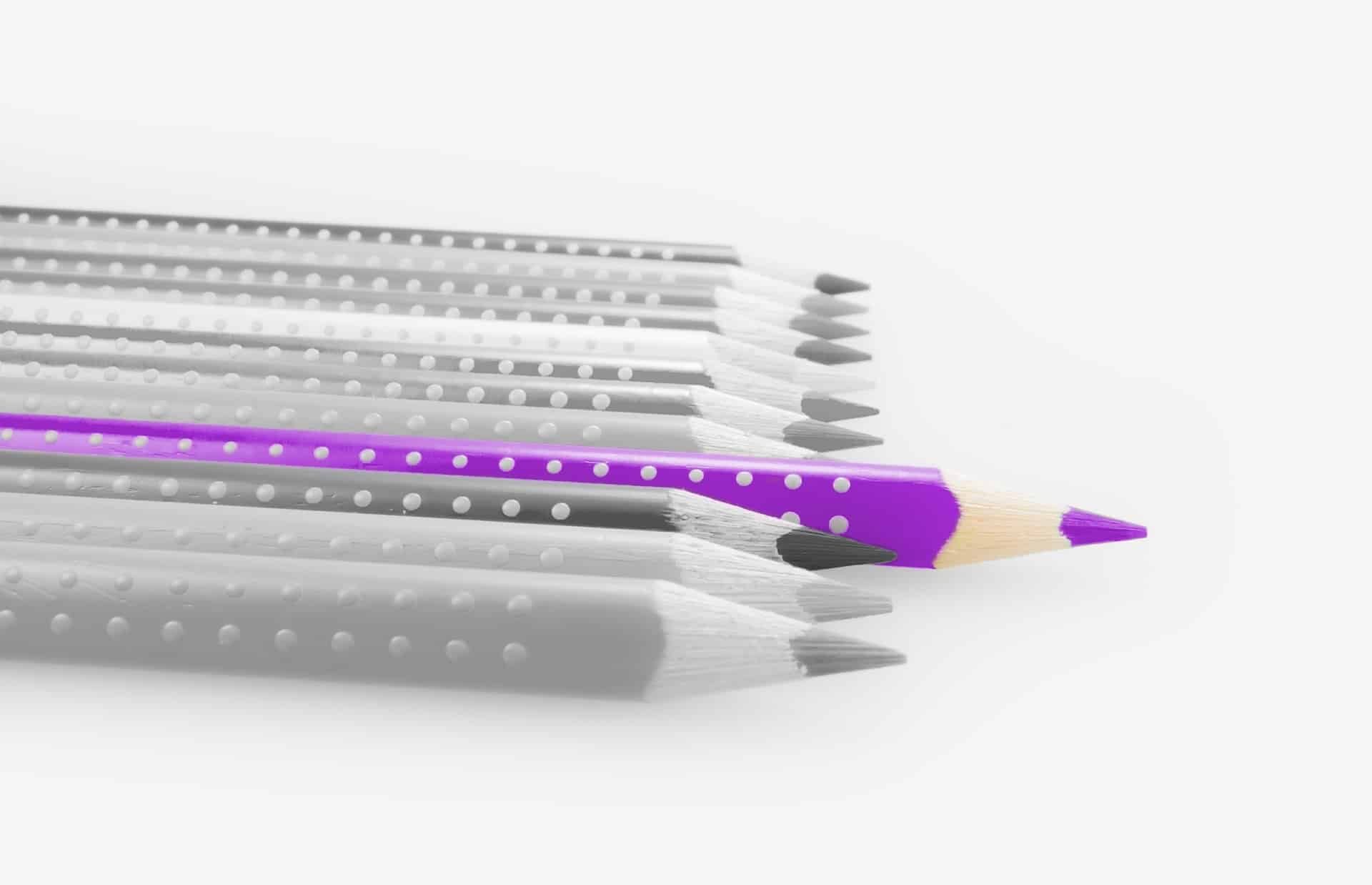Imagine a school where the majority of the gifted students are raised in poverty. These students experience consistently failing grades and, ultimately, many drop out of the school system. Very few would argue with the sentiment that this is not an ideal situation. Most school leaders would work with fervor to reverse this phenomenon if it were present in their schools.
Despite persistent efforts, schools are greatly concerned with issues of poverty, due to the negative impact of poverty on academic achievement. Over the years, research on children from poverty indicates that these students enter school with a weak literacy foundation. Specifically, they have less advanced language skills than do children from nonpoverty families in terms of vocabulary, reading achievement, and oral language (Fernald, Marchman, & Weisleder, 2013; Hart & Risley, 1995). Research studies also support the notion that children raised in poverty often experience overall low achievement in school (Becker & Luthar, 2007; Hopson & Lee, 2011).
Academic Literacy
Academic literacy is one of the key factors affecting the achievement gap between high- and low-performing groups (Wong-Fillmore, 2004). Students who underperform often come from backgrounds that have not prepared them for mainstream schooling’s ways of speaking, reading, and thinking. Students in poverty typically lack exposure to academic literacy and the types of language used in school because they have less academic support and fewer school-like conversations in their home environments (Zwiers, 2008).
Essentially, what is academic literacy? Academic literacy refers to language used in school settings (Bowers, Fitts, Quirk, & Jung, 2010). Academic language, as part of academic literacy, is used in various aspects of the academic realm such as in content-area curricula, explicit instructions, and classroom textbooks (Johnson, 2009).
The following encapsulate the various features of academic language:
- Unlike social language used in everyday conversations, academic language tends to be concise with complex ideas compressed into fewer words and long sentences consisting of sequenced information (Snow, 2010).
- Academic literacy encompasses two main types of vocabulary. The first is domain-specific academic vocabulary found in explicit content areas such as dew point and pressure in science or bisect and scalene triangle in math (Marzano & Pickering, 2005). The second is general academic vocabulary consisting of words that cross multiple content areas such as similar, chart, cycle, and transport (Coxhead, 2000). Together, these comprise examples of academic vocabulary commonly used in classrooms.
- Academic language is used to describe and explain complex concepts related to any discipline in a clear and concise manner (Schleppegrell, 2004). All content areas in school encompass complex ideas and relationships.
- Academic language is used in school to describe complex thinking processes or higher order thinking skills—thinking skills to comprehend and express ideas, as well as to solve problems (Swartz, 2001).
- Academic language is used to describe abstractions found in any content area (Zwiers, 2008). Abstractions are concepts or ideas that have two key characteristics. First, they represent a reduction in information as compared to a concrete idea. Second, abstractions are general principles that are consistent across different concrete ideas or situations (Garlick, 2010). Examples of abstractions include numbers; words like half, diffusion, and liberty; and phrases such as similarities between two cultures, evidence that supports the opposing position, and interpretations of a character’s actions (Garlick, 2010; Zwiers, 2008).
Academic Literacy Within the Context of Poverty
Children in poverty demonstrate a number of academic deficits. They possess a weaker grasp of language skills when they begin school, as compared to children from higher socioeconomic status (SES) backgrounds (Entwisle & Alexander, 1996). When compared to their middle- to high-SES counterparts, children from lower SES families perform significantly poorer in the following areas.
Vocabulary Acquisition
Hart and Risley’s (1995) landmark study pointed out a significant effect of poverty on vocabulary growth; the gap between the number of words produced by children from higher and lower SES levels increased over time. These researchers found that by the age of 3, children from high-SES backgrounds had an average vocabulary of 1,116 words while children from low-SES backgrounds had vocabulary that averaged 525 words.
Reading Acquisition
In terms of reading skills, evidence from research suggests that children from poverty perform below average on preliteracy skills, including phonological awareness (the ability to isolate and manipulate sounds) and print awareness and letter knowledge (the knowledge of forms and functions of print; Barone, 2006). These preliteracy skills play an essential role in children’s early reading success. In addition, the lack of literacy-rich environments of children from poverty contributes to their underachievement in school.
Oral Language Acquisition
Children from low-SES backgrounds exhibit lower levels of oral language skills than do children from higher SES backgrounds on measures of language production and comprehension. These differences can be found in research examining developmental ranges from infancy to high school, with the gap widening as the age increases (Fernald et al., 2013). This is because verbal interactions at home tend to consist mostly of short sentences that are imperative in nature and are characterized by fewer responses. This situation is in stark contrast to mothers from middle- and high-SES backgrounds who typically adopt more complex language and vocabulary with their children (Hart & Risley, 1995; Hofferth & Sandberg, 2001).
In sum, for children to attain academic literacy, they need to learn to recognize the function, structure, and demands of language used in the classroom. When students encounter gaps in academic language, it leads to an academic literacy gap that in turn leads to a gap in academic achievement gap (Johnson, 2009).
How can gifted children from poverty build academic literacy and experience academic success? Research studies suggest that students construct and use associative networks that build connections from images to words and names to pictures through a process called dual coding (Clark & Paivio, 1991). These studies underscore the role of nonverbal intelligence or visualization in helping to build the verbal intelligences (language) of children from poverty.
Mindsketching
Mindsketching is based on one of the most well-known works on visualization called dual coding theory of cognition (DCT; Paivio, 1969, 1978). Paivio opined that verbal and nonverbal information are processed in functionally autonomous but interconnected systems. In an educational setting, DCT aids the information processing needed in academic literacy by assisting the learner in making connections between mental representations created in the visual and verbal systems (Paivio, 2008). Further, Paivio (2008) emphasized the visualization-verbalization procedure. That is, classroom instruction entails the use of images for text segments such as words, phrases, and sentences, and students are encouraged to describe their images in progressively greater detail.
Visualization techniques, a central element of DCT, can address poor academic achievement in any child. These techniques appear to be particularly useful in helping children from low-SES backgrounds who are often at risk for oral and literate language difficulty; they serve to build the complex language skills needed for academic literacy (Burt, Holm, & Dodd, 1999). To overcome challenges in this area, children from low-SES backgrounds can be assisted in building complex language through a visualization strategy called mindsketching (Juntune, 2012; Juntune & 120 Creative Corner, 1987).
Mindsketching is different from other drawing strategies; the intent is to capture an image of a concrete or abstract idea by sketching it in very few lines (Juntune, 2012; Juntune & 120 Creative Corner, 1987). The dual coding theory (Paivio, 1969, 1978) suggests that images, even with little detail, leave a distinctive trace in the memory, facilitating the retention of verbal and written information. Students from poverty have been shown to better retain information when they use visualization techniques to help them build academic literacy (Juntune, 2012).
A learner must hold a mental image in his or her memory long enough to search for the verbal information needed to communicate that image (Juntune, 2012). Therefore, the process of leveraging the nonverbal memory to facilitate the retention of verbal information through mindsketching may offer hope and possibilities for teachers seeking to build academic literacy of their gifted students from poverty.
Ways to Use Mindsketching in the Classroom
I conducted a qualitative study with seven elementary school teacher participants in three schools within a single school district in west Texas. Each teacher who participated in the study had attended 2 years of monthly one-hour sessions on how to use mindsketching in the classroom and had used mindsketching techniques in their gifted classrooms at least twice a week for the past 2 years. In addition, at least 75% of the students in each of their classrooms came from low-income backgrounds, based on eligibility for free or reduced lunch programs.
I obtained information on specific mindsketching techniques in a variety of content areas taught by the teachers through face-to-face interviews and classroom observations. The following are some ways that teachers have used mindsketching to build academic literacy. Insights from the teachers are also included.
Vocabulary. The students were given a vocabulary word and then they sketched an image when they thought of that word. Afterward, the students would write a key word or essence phrase of that word alongside their sketch. They would then share their sketches orally with a partner. At the end of the exercise, the students would add on to their sketches and then write their own definitions based on their sketches. The sketches were kept in a word journal for future writing assignments.
Insights. The teachers recognized that if students did not know what that word meant, they would not have an image in their minds, and therefore, were unable to sketch. In those instances, they were allowed to go to the dictionary, read the definition, and then sketch what they understood from the definition.
Math. Mindsketching was used to teach abstract concepts like addition or subtraction. The teachers would ask the students, “What do you see when you think of addition? Close your eyes. What do you see? Whatever it is you see, sketch that on the paper and then tell your partner.”
Mindsketching was also used after a role-playing activity. One teacher had the students act out one quarter. After the role-play, students sketched what they understood about the concept of one quarter.
Insights. When mindsketching was integrated into role-play activities, students understood the concept more easily. When students witnessed an abstract concept acted out in concrete terms, the students sketched what they saw to help them remember.
Science. For a lesson on matter, the students sketched domain-specific vocabulary such as neutron, positive, and negative. After mindsketching, the students explained those concepts orally to a partner using their own words. In the lower elementary grades, students sketched characteristics of mammals, reptiles, or amphibians, and shared the content of their sketches by conversing with a partner.
Insights. The teachers were able to detect gaps in students’ understanding because they had to sketch and explain to someone else. Sketching was highly useful in combination with students verbalizing their sketches. When verbalizing their sketches, students were expected to speak in complete sentences as this linear language represented complete thoughts.
Language arts. Students would do a plot mountain, where, instead of using words to describe how the story reached the climax, they used their sketches instead.
Insights. The teachers shared that the students’ sketches provided an avenue for them to delve more deeply into the character of the protagonist or how the plot developed into a climax. They did more than simply narrate the story; they also talked about narrative devices that were used to move the plot along.
History. Students produced notes on the Texas Revolution using mindsketching to help them understand the various battles that were fought.
Insights. During the following year, the students were asked to write a paper on the independence of Texas. The students used their sketches to help them write.
Surfacing prior knowledge. All of the teachers shared that they used mindsketching to surface prior knowledge of their students in all content areas. For example, one teacher showed a cut-out silhouette of a person’s head. She used the silhouette numerous times for students to sketch what was “in their heads” using the statement starter, “Sketch 5 things you know about _.”
Insights. The teachers found that the students’ sketches were invaluable aids to recall learned information after a long period of time. Before, the sketches were thrown away after the lesson, but the teachers now discovered the value of students keeping the sketches in notebooks so they could use the sketches as triggers to recall what they learned. Using the sketches to aid memory was the teachers’ way of engaging students productively for successful information recall.
Oral activities. After every sketching activity, students were encouraged to describe and explain their images in progressively greater detail—from words and phrases to sentences.
Insights. Teachers reported that after their students sketched their mental images, they were better able to verbalize those images to their peers using complete sentences. As minimal details were used in the sketches, they were meaningless to other students. The sketches thus facilitated oral discourse amongst the students and fostered understanding of the content.
Reading activities. Students in lower and higher elementary grade levels used Mindsketching to help them in their reading comprehension. One common strategy involved teachers reading the first paragraph from a story and the students sketching what they listened to in fewer than 20 seconds. They would then read the next paragraph and the students would sketch. After four or five sketches, the students would turn to their partner, point at their sketches, and share the sequence of the story orally.
Insights. Teachers shared that the students were not only able to sketch very quickly, but more importantly, recited the story in their own words in complete sentences. Moreover, the teachers shared that the students needed to have “that picture in the brain” to indicate that they understood what they read. If students did not have that “mind movie,” that was a signal that they were lost and that they probably did not understand what they had read or heard.
Writing activities. Students used mindsketching to help them in narrative writing. The “think-sketch-sort-talk” activity helped them to sketch, articulate orally, and then engage in the writing activity. For example, when writing about the sights and sounds of a carnival, students sketched their ideas on sticky notes with one idea per sticky note. They sorted their ideas to make a coherent narrative. They then took turns to have a conversation with their partners about the sketches. Students were encouraged to write one or two complete sentences for each sketch.
Insights. One of the main insights the teachers had about the writing process was the skill of sequencing information. The teachers observed that much of their curriculum content required students to sequence information in any writing task. For example, the teachers found that science presented many opportunities for students to sequence information such as life cycles of a plant or animal, the water cycle when discussing how rain was formed, or the cycle of the four seasons. In social studies and language arts, students learned how to sequence information by sketching events in history, in novels, or their own stories.
Conclusion
Mindsketching brings a visual component to learning and helps students build connections from images to words. It can assist students in improving their language skills—from simple words and short phrases to complete and complex sentences using descriptive language.
As a start, students can be trained to use mindsketching by encouraging them to sketch things they see around them, such as things they find on their way to and from school, things that are round, or things that make sounds. As they become more comfortable with sketching concrete objects, they can be encouraged to sketch abstract concepts with the purpose of expanding the use of verbal language.
In addition, mindsketching can help students effectively connect new knowledge to previous knowledge to enhance learning. Teachers can engage their students in mindsketching to understand what students know—or think they know—to help design classroom instruction more appropriately, by identifying and actively filling in the gaps to correct students’ misconceptions.
Underlying mindsketching is the notion of visualization-verbalization procedures. After every mindsketching activity, teachers can provide their students with conversational opportunities for targeted oral practice. Combining sketches with verbal elaboration, in turn, can further enhance students’ learning in areas such as vocabulary, reading comprehension, and writing.
References
Barone, D. M. (2006). Narrowing the literacy gap: What works in high poverty schools. New York, NY: Guilford.
Becker, B. E., & Luthar, S. S. (2007). Peer-perceived admiration and social preference: Contextual correlates of positive peer regard among suburban and urban adolescents. Journal of Research on Adolescence, 17, 117–144. doi:10.1111/j.1532-7795.2007.00514.x
Bowers, E., Fitts, S., Quirk, M., & Woo, J. (2010). Effective strategies for developing academic English: Professional and teacher practices. Bilingual Research Journal, 33, 95–110. doi:10.1080/15235881003733407
Burt, L., Holm, A., & Dodd, B. (1999). Phonological awareness skills of 4-year-old British children: An assessment and developmental data. International Journal of Language & Communication Disorders, 34, 311–335.
Clark, J. M., & Paivio, A. (1991). Dual coding theory and education. Educational Psychology Review, 3, 149–210.
Coxhead, A. (2000). A new academic word list. TESOL Quarterly, 34, 213–238.
Entwisle, D. R., & Alexander, K. L. (1996). Family type and children’s growth in reading and math over the primary grades. Journal of Marriage and Family, 58, 341–355.
Fernald, A., Marchman, V. A., & Weisleder, A. (2013). SES differences in language processing skill and vocabulary are evident at 18 months. Developmental Science, 16, 234–248. doi:10.1111/desc.12019
Garlick, D. (2010). Intelligence and the brain: Solving the mystery of why people differ in IQ and how a child can be a genius. Burbank, CA: Aesop Press.
Hart, B., & Risley, T. R. (1995). Meaningful differences in the everyday experience of young American children. Baltimore, MD: Paul H. Brookes.
Hofferth, S. L., & Sandberg, J. F. (2001). How American children spend their time. Journal of Marriage and Family, 63, 295–308. doi:10.1111/j.1741-3737.2001.00295.x
Hopson, L. M., & Lee, E. (2011). Mitigating the effect of family poverty on academic and behavioral outcomes: The role of school climate in middle and high school. Children and Youth Services Review, 33, 2221–2229.
Johnson, E. R. (2009). Academic language! Academic literacy! A guide for K–12 educators. Thousand Oaks, CA: Corwin Press.
Juntune, J. E. (2012, April). Strategies for building academic literacy in gifted students raised in poverty. Paper presented at the Texas Association of the Gifted and Talented Leadership Conference, Austin, TX.
Juntune, J. E. (Producer), & 120 Creative Corner (Director). (1987). Mindsketching: Sketching techniques to improve the power of visualization in learning and retention. [Video] Circle Pines, MN.
Marzano, R. J., & Pickering, D. J. (2005). Building academic vocabulary: Teacher’s manual. Alexandria, VA: Association for Supervision and Curriculum Development.
Paivio, A. (1969). Mental imagery in associative learning and memory. Psychological Review, 76, 241–263.
Paivio, A. (1978). Mental comparisons involving abstract attributes. Memory & Cognition, 6, 199–208. doi:10.3758/BF03197447
Schleppegrell, M. J. (2004). The language of schooling: A functional linguistics approach. Mahwah, NJ: Erlbaum.
Snow, C. E. (2010). Academic language and the challenge of reading for learning about science. Science, 328, 450–452. doi:10.1126/science.1182597
Swartz, R. (2001). Infusing critical and creative thinking into content instruction. In A. L. Costa (Ed.), Developing minds: A resource book for teaching thinking (pp. 266–274). Alexandria, VA: Association for Supervision and Curriculum Development.
Wong-Fillmore, L. (2004). The role of language in academic development. Retrieved from http://www.scoe.org/docs/ah/AH_language.pdf
Zwiers, J. (2008). Building academic language: Essential practices for content classrooms. San Francisco, CA: Jossey-Bass.
Suzanna Jeyanthi Ramos, Ph.D., is an assistant lecturer in the Department of Educational Psychology at Texas A&M University. Dr. Ramos received her B.A. (Honors) in geography and English, an M.S. in creativity and change leadership, and a Ph.D. in educational psychology focused on giftedness, intelligence, and creativity. Prior to her doctoral studies, she was head of the Department for Humanities and an assistant principal in public schools in Singapore. She also worked as a professional development officer at the Ministry of Education (Singapore), facilitating teachers in action research. Dr. Ramos teaches courses on educational psychology, child development, and research methods at Texas A&M University.







